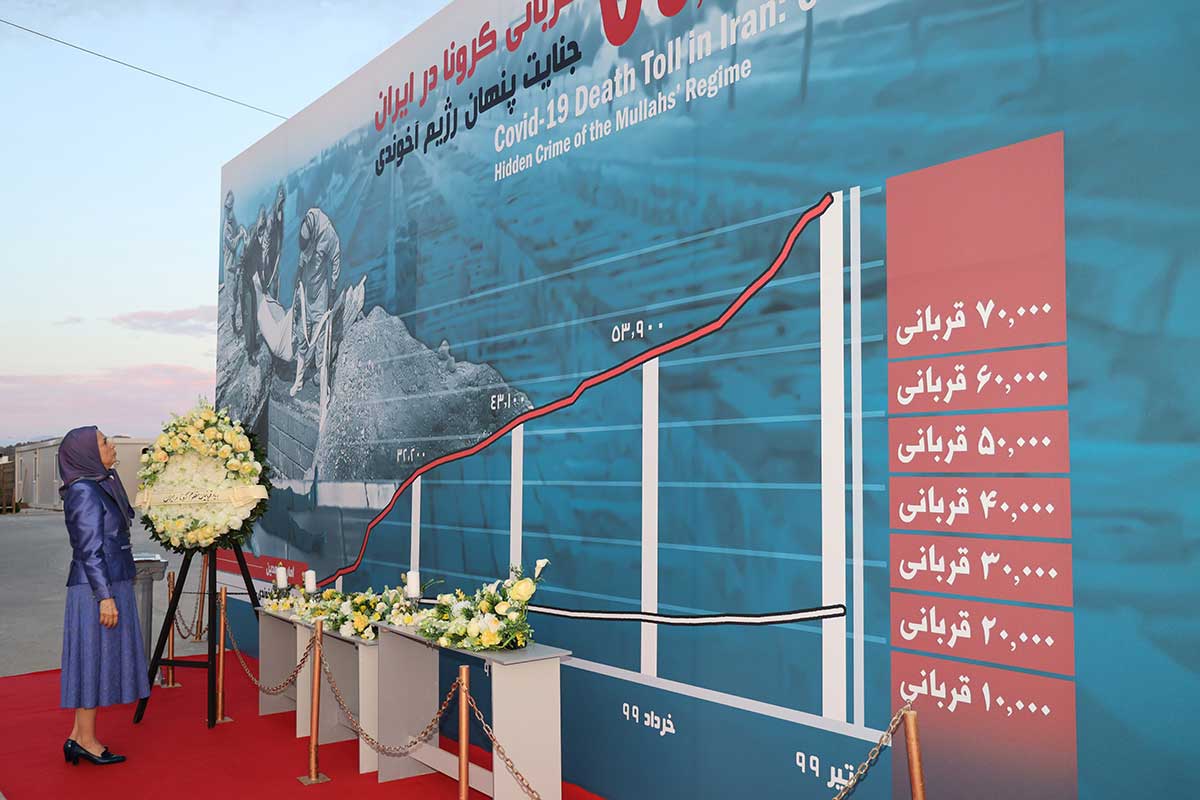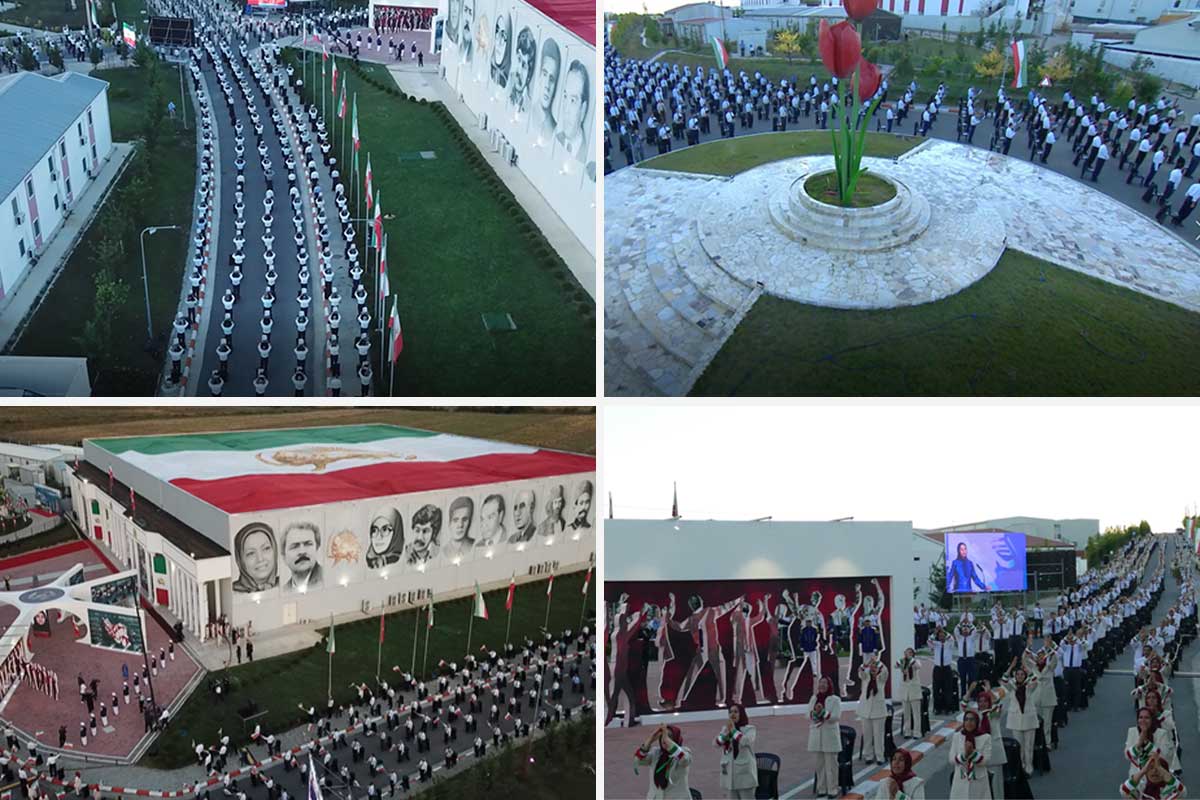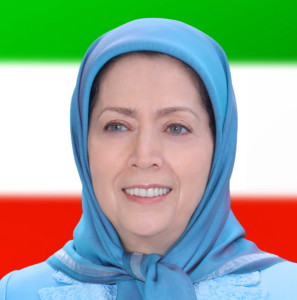Why the Iranian Regime Must Be Held Accountable?
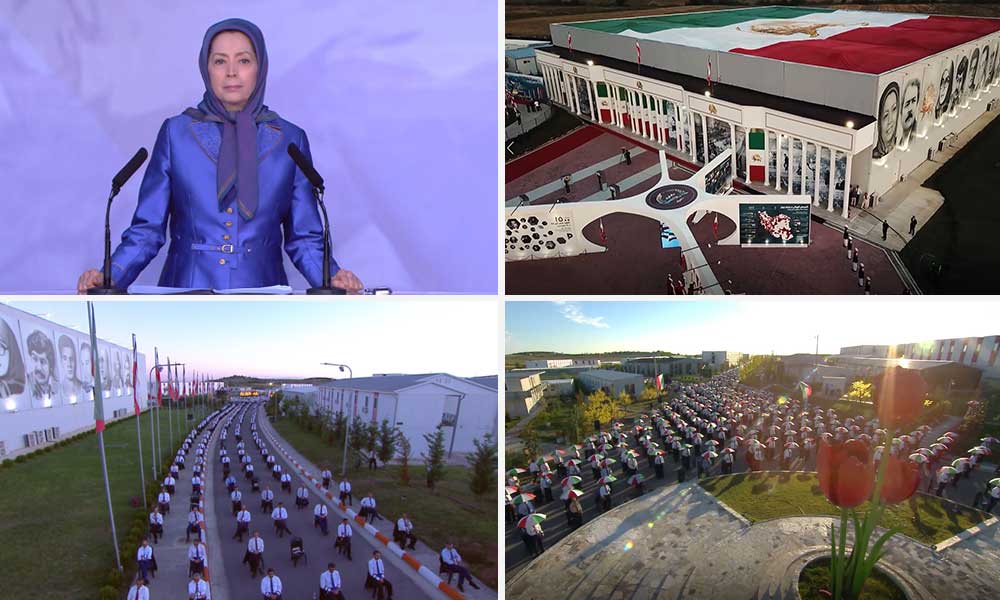
Seeking Justice for Martyrs, and Holding the Iranian Regime Accountable
The Free Iran Global Summit continued on Sunday, July 19, 2020, with a virtual conference held in online connection with Ashraf 3.
The call-for-justice conference entitled, “32nd anniversary of the 1988 massacre, an unpunished crime against humanity,” featured jurists and international political personalities who addressed the conference. Former political prisoners and eyewitnesses to the massacre also spoke about their observations.
In a speech to this conference, Maryam Rajavi said:
Compatriots,
Sisters and brothers,
I salute each and every one of you.
Congratulations for compelling the clerical regime and its criminal Judiciary to take one step back and suspend the executions of three young protesters in the wake of a storm of outrage and over 11 million protests.
Nevertheless, the criminal Judiciary of the mullahs sentenced three brave young Kurds in Saqqez to more than 16 years in prison for setting fire to the posters of Qassem Soleimani.
So, the fury and protests of the people of Iran will continue until final victory and the overthrow of the clerical regime. These youths and all prisoners detained for taking part in the uprising must be immediately released.
Also in Behbahan, despite banning all forms of gatherings because of the coronavirus, the regime resorted to a counter-demonstration, chanting their usual chants of “death to the Monafeqin [Mojahedin].” But these theatrics do not solve any of the regime’s incurable problems, particularly that the value of the country’s currency has plunged to 26,000 tomans for a dollar.
Yes, the end and the overthrow of the clerical regime is at hand and within reach.
But we have gathered to commemorate five significant and historic occasions and reflect on their lessons. The roadmap and the path that we have taken to this day is at the same time a guiding light for the future:
The anniversary of the uprising of the people of Tehran on July 21, 1952;
The 40th anniversary of the founding of the National Council of Resistance of Iran (NCRI);
The anniversary of the ceasefire of the Iran-Iraq War on July 18, 1988; this ceasefire was a “chalice of poison” (as Khomeini called it) that the National Liberation Army of Iran imposed on the regime, particularly after the liberation of the city of Mehran;
The other incident was Khomeini’s fatwa to massacre the PMOI and other political prisoners who had adhered to their cause and their principles;
And, finally, the anniversary of the Eternal Light Operation during which the National Liberation Army of Iran advanced 170 kms deep into Iranian territory close to the gates of Kermanshah; something that seemed inconceivable at the time.
Indeed, the battle for taking Iran back from the clerical occupiers will continue and it will undoubtedly triumph.
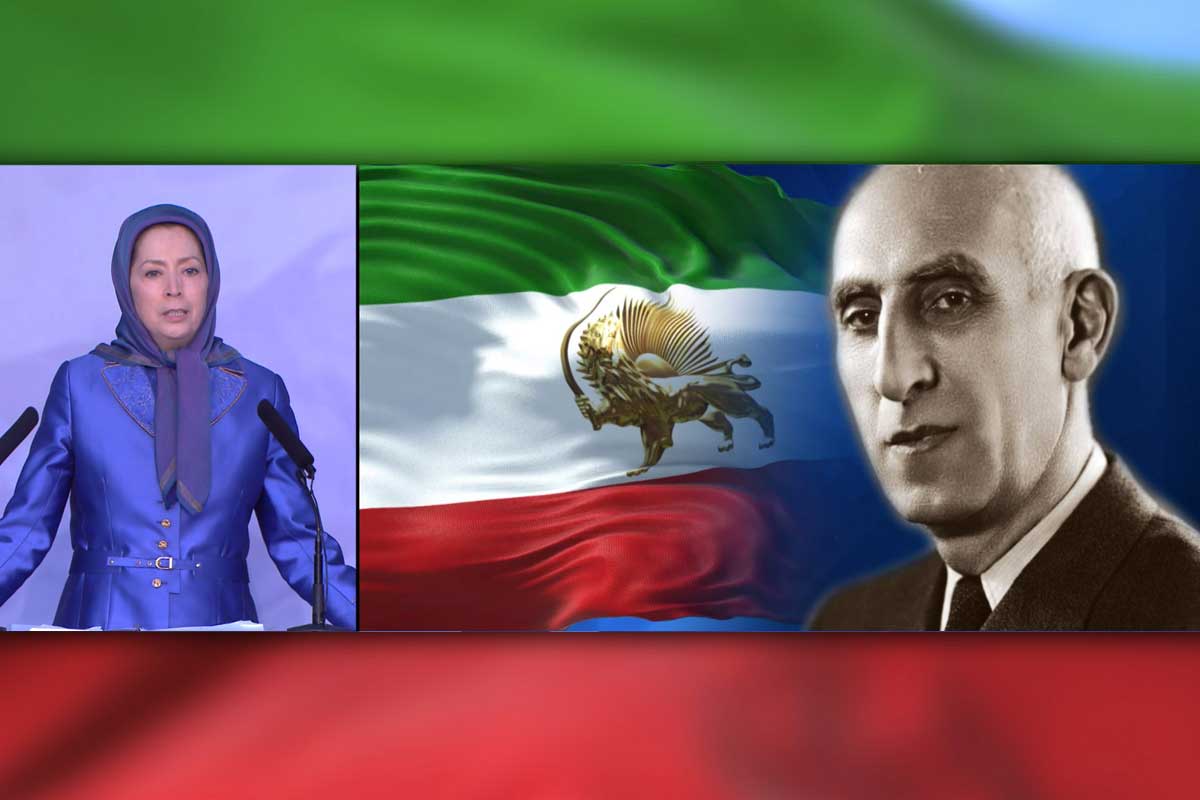
Anniversary
We pay tribute to Dr. Mohammad Mossadeq, the great leader of the Nationalist Movement of Iran, who in the aftermath of the 1953 coup, sent a message to the younger generation, saying, “You are the last arrow in the quiver of the people of Iran. You must learn from what you have seen and put it into practice.” He also said, “The reason we are behind is because we do not have a political and social organization.” He was inspired by the Mojahedin of Algeria, and was hoping for the emergence of Mojahedin of Iran who would “sacrifice everything they have” in order to build a free and independent nation, and who would be “tenacious and insistent” on their position.
Some years later, in his defense before a military tribunal in 1971, Massoud Rajavi said, “My friends and I are Dr. Mossadeq’s children who have dispensed with all personal ambitions for wealth and stature.” He added, “Mossadeq sought an end to colonialism and wanted to see the dawn of freedom and independence.”
Ten years later, Massoud Rajavi founded the National Council of Resistance of Iran to prevent anyone from usurping the outcome of the suffering and sacrifices of martyrs, as it happened during the anti-monarchic revolution in 1979, and to guarantee a democratic future for Iran.
Let us glance over the plans and resolutions of the National Council of Resistance of Iran and the transitional government, which have been adopted starting over four decades ago. They truly shine bright and have been vindicated over time.
From the principle of universal suffrage and respecting people’s vote, to the declaration that the mullahs’ religious fascist regime is not capable of being changed, is incapable of making reforms, and is incapable of even negotiating.
From the Peace Plan, peace policy, and the peace movement against Khomeini’s warmongering, to the plan for the autonomy of ethnic minorities within the framework of Iran’s unity and territorial integrity.
From the Plan on Separation of Religion and State to the Plan on Freedoms and Rights of Women.
The Plan to form the National Solidarity Front to overthrow the mullahs’ religious tyranny stipulates that if anyone seeks a republic and a democratic political system based on separation of religion and state, they are undoubtedly with us. The Plan for the National Solidarity Front is ignored precisely by those who have built a bridge to the Shah or the mullahs, so that after the unravelling of the terrorist designation against the PMOI/MEK, they can label the PMOI/MEK a sect, in accordance with the terminology of the mullahs’ Ministry of Intelligence.
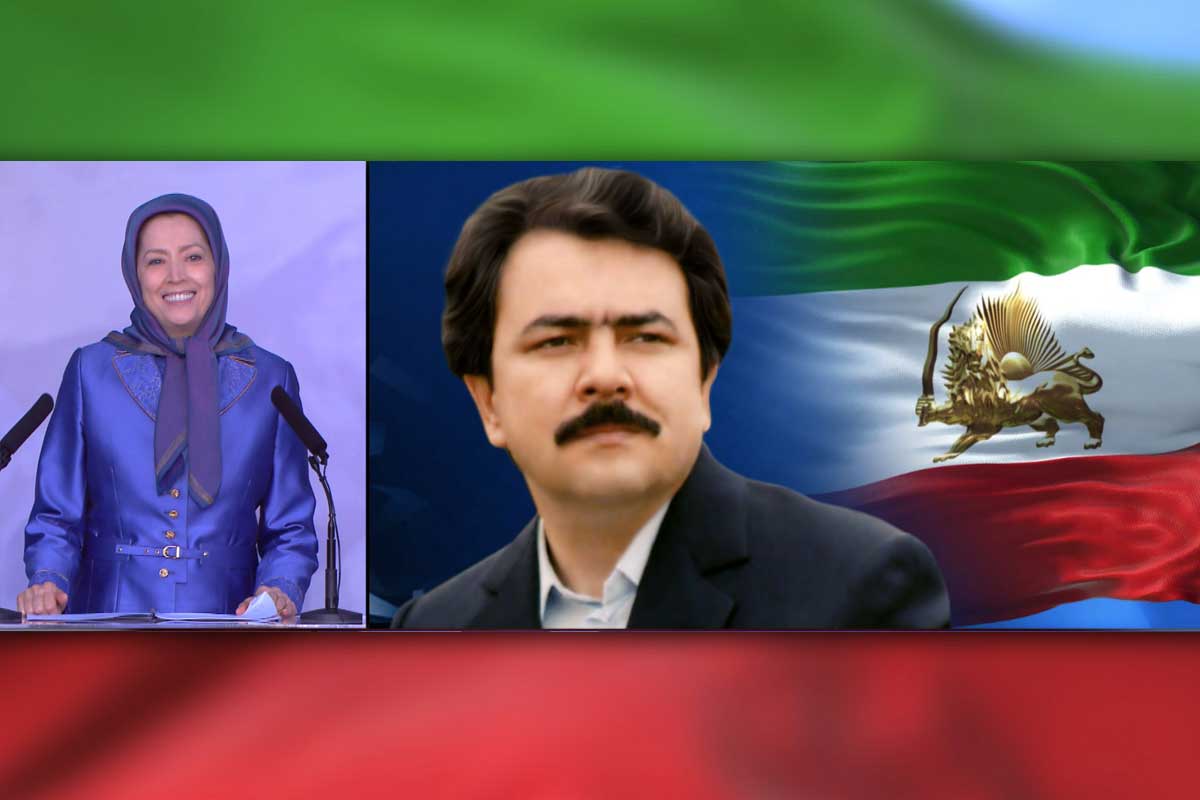
The Greatest Lesson
Dear friends, compatriots,
The foundation, introduction and preservation of an alternative was the first, the greatest, and of course, the most difficult lesson we learned from the anti-monarchic revolution. This means that it is not enough to simply say what we do not want, and what must not exist, like the time when everyone said that they did not want the Shah’s dictatorship. Rather, one must specify what it is that they want in precise terms and what must exist instead. This has been formulated in the Ten-Point Plan.
Our endless gratitude to the President of the National Council of Resistance of Iran, Massoud Rajavi, who opened a new chapter in Iran’s history by founding a democratic alternative right at a time when Khomeini was planning to put an end to the chapter of freedom and revolution in Iran by launching a bloody crackdown and a wave of executions.
Massoud’s first and most important “sin” was that he gave priority to freedom. For this reason, he rejected and boycotted the constitution of the religious dictatorship. This position was diametrically opposed to the defectors of the Islamic Revolutionary Guard Corps, the Tudeh Party, and other groups and individuals who suddenly remembered to speak of freedom and democracy only after they landed abroad.
In March 1981, the Tudeh Party wrote in their newspaper: “Mr. Rajavi must note that, compared to the fight against imperialism, the democracy he adores and worships so much may not even be of secondary importance in our times.”
Yes, the alternative, the NCRI, was founded based on freedom and opposition to despotism, defying the Shah and the mullahs, and of course, the heaviest price in blood has been paid for it to last and endure.
The Greatest Political Demarcation
For four decades, the clerical regime has been making every effort through its demonization campaigns, executions, massacres and terrorism, to destroy this alternative, which is what needs to exist.
It has been seeking to convince the world that there is no alternative to this regime and that the world must get along with the mullahs.
And when it failed to destroy the PMOI/MEK and the National Council of Resistance of Iran (NCRI), it claims that the PMOI/MEK and the NCRI are worse than the regime and therefore, again, the world must succumb to this regime.
The outcome of the status quo is clear. On the one hand, young people are being slaughtered and on the other, our people’s wealth is being plundered. Even the Caspian Sea, the Persian Gulf and its islands are being auctioned off in treacherous contracts. Issues which are being talked about very much these days.
This is how the mullahs have been keeping their grips on power, but this is not going to last long.
Dear friends,
In the past 40 years, the regime has constantly and incessantly declared that the PMOI/MEK and the Iranian Resistance are its main enemy and the regime’s first red line. Therefore, in such a historic confrontation, one can identify the position and political coordinates of all forces and groups.
On the one hand, there are the remnants of the Shah and the mullahs and individuals and groups who openly, unequivocally, and shamelessly prefer the mullahs’ regime to the NCRI, and particularly to the PMOI/MEK. For example, they do this with respect to the policy of peace and the peace movement during the 8-year Iran-Iraq war.
The same is true in their discussions over the nature and identity of the regime after Khomeini’s death, and with respect to the mirage of Rafsanjani’s moderation.
Or, another example, is the case of Khatami and his illusory reforms.
So, we face groups and individuals who are either with the clerical regime, or are their de facto allies, or are somewhat aligned and moving in the same direction with the regime.
For example, they are aligned with regards to sanctions and the nuclear and missile projects, or the activation of the snapback mechanism in the six suspended UN Security Council resolutions against the regime.
Or, over the terrorist designation of the Islamic Revolutionary Guard Corps (IRGC), or in the case of Qassem Soleimani, and the regime’s interventions in Syria, Lebanon and Yemen.
Yes, they are in agreement and aligned with the regime over all these issues.
But on the other hand, there are those who have stood up to this regime and are, therefore, with us or move in the same direction as the Iranian Resistance.
This is the primary, most significant and greatest demarcation in Iran today.
In order to understand and know every individual or group, one can simply ask them about their real choice in practice between the clerical regime and the NCRI, between the PMOI/MEK and the ruling mullahs, whether they are “moderates, reformists or principalists.” Which one do they prefer?
It is in response to this basic and fundamental question, where all parties reveal their true colors.
The barometer
In fact, the NCRI alternative is a good yardstick and a mirror image, reflecting the struggles and resistance of the past 40 years.
This truth fully shows why the regime’s demonization and animosity against the PMOI/MEK and the terrorism directed against the Iranian Resistance is carried out on such an enormous scale and what the objectives behind them are.
Therefore, we have nothing to talk about with those who prefer the Shah and the mullahs to the PMOI/MEK and the NCRI. The people of Iran made their position clear about the Shah when they toppled him in the 1979 anti-monarchic Revolution.
The final position regarding the mullahs and those who prefer the clerical regime’s IRGC and Judiciary to the PMOI/MEK and the NCRI, will also be shown in the Iranian people’s uprisings and New Revolution.
Look at the historic declaration of 31 prominent American dignitaries issued on June 30, this year, on the need to hold the regime of criminals accountable.
They have made it clear to the entire world, that in the 40-year dark landscape of this regime and its endless crimes against humanity and the people of Iran, “there is a beacon of hope,” which is the National Council of Resistance of Iran.
The statement says, “The one organization that has done more than any other entity, including governments, to free Iranian citizens from tyranny and the world from fundamentalist-inspired terrorism is the National Council of Resistance of Iran (NCRI). The NCRI strives relentlessly to ensure that hope for democracy and an end to injustice remains alive in Iran.”
The statement says, “The NCRI and its affiliate organization, the MeK, have endured unspeakable horrors from the Iranian regime.”
Yes, this is exactly true.
An Unpunished Crime against Humanity
One of the most horrifying and indescribable crimes that we endured was the massacre of our prisoners on Khomeini’s fatwa. He committed this heinous crime after he was forced to accept the ceasefire in the eight-year war with Iraq.
Khomeini had vowed to continue that war until the last standing building in Tehran; a war which he saw as “a divine blessing” to preserve his regime. His strategy and official slogan in the war was to “Liberate Qods (Jerusalem) via Karbala (in Iraq)”; a war with one million deaths on the Iranian side alone.
Khomeini’s Minister of Education boasted of sending 440,000 students from Iran’s elementary and high schools to the warfront, i.e. on the mine fields, during the eight-year war. Just like today, when the regime does not hesitate to send our people into the mine fields of the coronavirus.
By his fatwa sanctioning the 1988 massacre, Khomeini intended to annihilate the generation of the PMOI/MEK, just as the Mongols did in Iran, to guarantee his rule.
Of course, in those very days, Khomeini’s heir apparent who was later ousted, Hossein Ali Montazeri, wrote him that the Mojahedin were a type of logic which could not be annihilated by killing, but would further propagate.
In a handwritten fatwa sanctioning the massacre, Khomeini wrote: “If the person at any stage maintains his/her support for the Monafeqin [Mojahedin], his/her sentence is execution. Annihilate the enemies of Islam, immediately.”
Baroness Boothroyd, a dear friend of the Iranian Resistance, once said that Khomeini’s massacre of political prisoners after he was forced to accept the ceasefire, was the greatest crime against humanity since World War II that has remained unpunished. But there will come a day when we will see that justice is done. For this reason, she said, since the outset, when the details of this massacre were revealed, we have called for prosecution of the masterminds and perpetrators of this great crime against humanity.
From the very beginning, Massoud Rajavi, the Leader of the Iranian Resistance, said, “The regime’s leaders and the masterminds and perpetrators of the massacre of political prisoners must be prosecuted and punished by an international tribunal and in the court of the people of Iran on the charge of crime against humanity… This is especially the case because this is an unprecedented example since the Mongol invasion… Therefore, this is the right of the people of Iran, of human society, of the PMOI/MEK and their people.”
Over the past 32 years, the Iranian Resistance has held hundreds and thousands of conferences, rallies, marches and symbolic trials in this regard and divulged numerous documents, names of the victims and their unmarked graves.
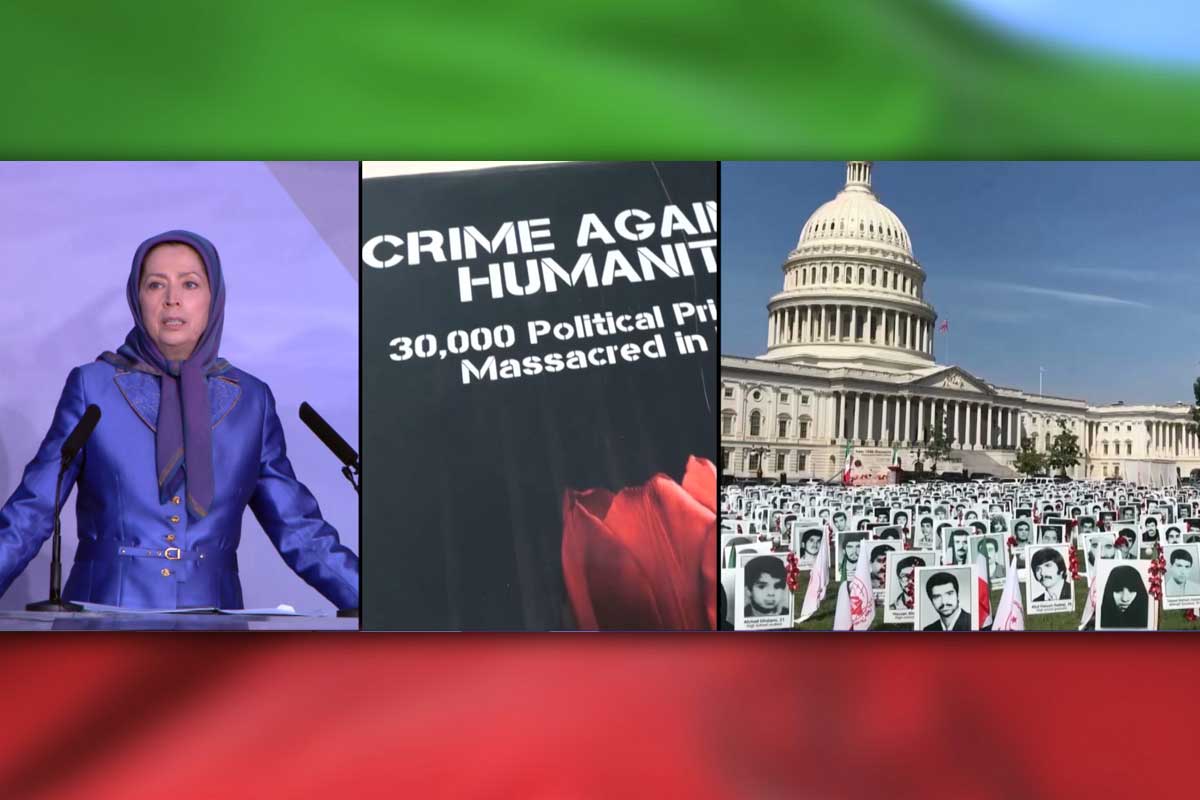
As you are aware, the Call-for-Justice movement played a significant role in foiling Khamenei’s scheme in the regime’s presidential elections in 2017 where he intended to engineer the election of Ebrahim Raisi, who was a member of the death committees which issued sentences for victims of the 1988 massacre.
The campaign was so effective that (the regime’s president, Hassan) Rouhani used it to attract more votes for himself. Opportunistically, he said Raisi did not have anything on his record except 38 years of executions and imprisonments.
Two days later, an infuriated Khamenei flanked by Qassem Soleimani and IRGC commanders, slammed Rouhani, warning him against crossing the regime’s red lines. Then, he openly “recommended” that his functionaries in the Intelligence Ministry write articles and make movies and do something to prevent Raisi from being exposed.
In the next steps, when the international Call-for-Justice movement climaxed, the regime undertook its own special schemes which it called “a complex multi-faceted operation.” It recruited a mercenary to distort the objectives of the Call-for-Justice movement, and marginalize the PMOI/MEK organization and their leadership, despite the fact that the PMOI/MEK’s destruction was the main goal of the 1988 massacre and Khomeini’s fatwa.
In addition, the arrest and apprehension of the terrorist diplomat in charge of the bombing of the Iranian Resistance’s annual gathering in Villepinte in 2018, and the foiling of the regime’s terrorist plots in Albania, forced the regime to find another way to confront the Iranian Resistance.
But the Iranian Resistance is vigilant. The NCRI Security and Counterterrorism Committee was able to make public the recorded conversations between two blood-thirsty mullahs, Ali Razini and Mohammad Moghiseh, and provide to the Swedish Judiciary.
And I would only recall this popular slogan about the massacre of handcuffed prisoners in 1988: “We will neither forgive, nor forget.”
The statement by American personalities also addresses the 1988 massacre: “The leading figures in this evil regime have been in positions of authority for years … (They) must now be held accountable.” The statement adds, “We recommend that countries that have been victimized by Iranian-government sponsored terrorism, including the US and its European allies, send teams of experts to study the evidence at Ashraf 3 while organizing their own evidence for eventual use in international tribunal proceedings.”
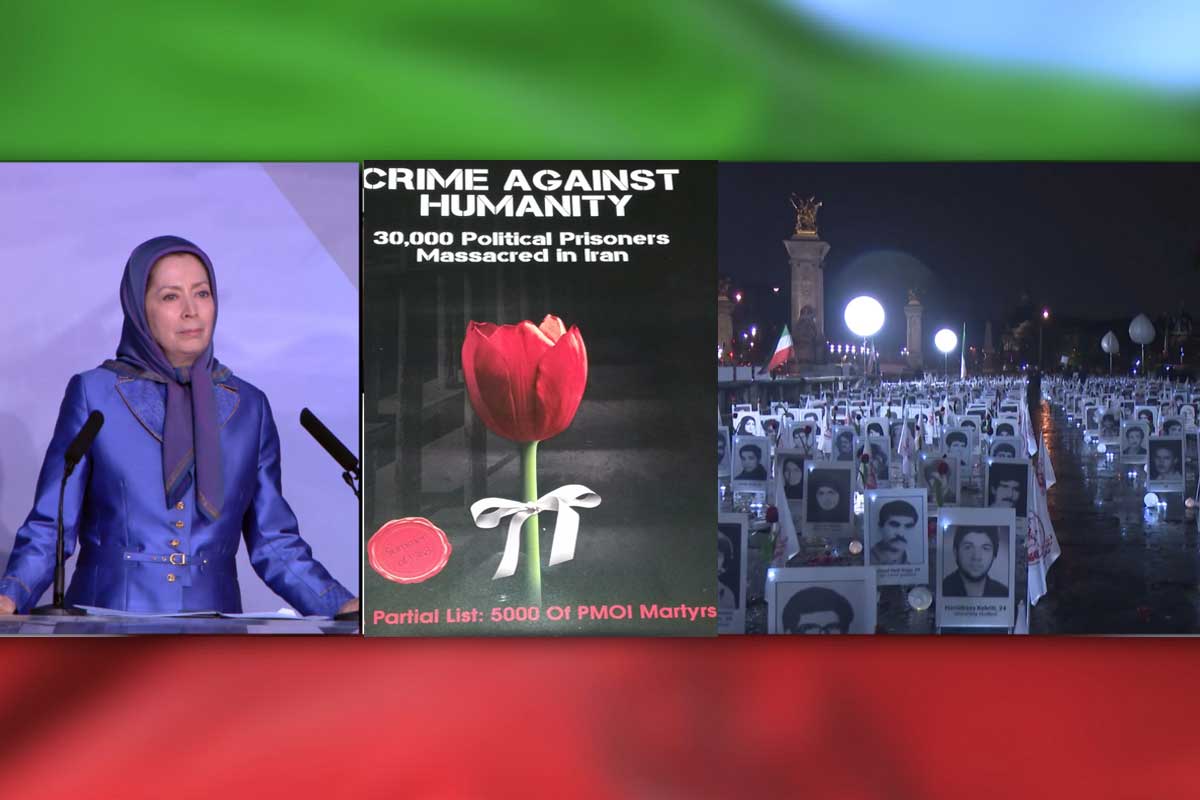
The sacred blood of those martyrs, particularly those slain in 1988, are today roaring in Iran, giving rise to generation after generation of rebellious youths who are motivated and inspired by it… The PMOI/MEK members, who walked to the gallows and sacrificed their lives by the thousands for the cause of freedom, are now the topic of discussion in the Iranian society.
The wave of arrests of defiant young people and widespread arrests of the families of PMOI/MEK members in recent months attest to this truth.
On May 17, 2020, Khamenei warned about the trend of young Iranians joining the PMOI/MEK, saying, “The experience of the early days of the (1979) Revolution must not be repeated when young Muslims were attracted to the PMOI/MEK and then attacked the regime.”
The state-run media call these young people “the sleeper cells” which, “multiply gradually underneath the city’s skin” and are waiting in the wings to revolt.
Last week, the Iranian regime’s Minister of Health cited a report from his security and intelligence colleagues saying, “People resort to protests and revolts out of poverty and destitution… All security, intelligence and military forces… must think of how to prevent another upheaval.”
Yes, the bells are tolling even within the regime.
It is not without reason that the regime is directing its demonization campaign against the PMOI/MEK and friends of the Iranian Resistance.
Sisters and brothers,
The issue at stake in Iran is resistance for freedom, people’s universal suffrage and a sovereign republic in place of the rule of the mullahs and religious dictatorship.
For 40 years, the mullahs have been viciously crucifying the PMOI/MEK and the Iranian Resistance, particularly Massoud Rajavi, every day with the barrage of their lies and unfounded allegations, just like they killed and tortured our people and barbarically destroyed Iran.
But Massoud Rajavi’s name inspires the rebellion and the fight for freedom, just as his name inspired the perseverance and resistance of political prisoners during the 1988 massacre.
Although he is being attacked from all sides by his enemies, but there will come a day when his dreams of a free Iran will come true.
Yes, the day will come when the flowers of freedom and popular sovereignty will bloom in Iran. And that day will certainly come.
Hail to the martyrs
Long live freedom
